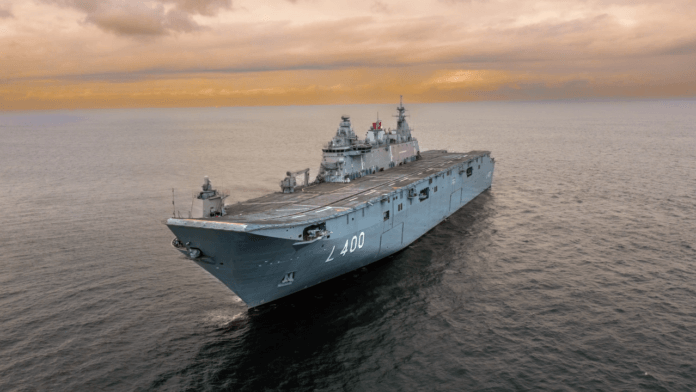It’s been a big month for Turkey’s drone industry, with the commissioning of the TCG Anadolu, the world’s first navy carrier to carry a full fleet of armed drones, and Ankara-headquartered defence giant Aselsan announcing new foreign contracts for its iHTAR counter drone system.
Aselsan announced a concerted export drive this month and the signing of contracts to supply its iHTAR anti-drone system to Angola, Kyrgyzstan, Niger and Northern Cyprus. According to the contractor, the iHTAR system is already in use at Turkey’s Presidential Complex in Ankara, at the strategically important TUPRAS and TPAO oil refineries, and for the Türkiye’s Akkuyu Nuclear Power Plant. After years of trials and product development, the manufacturer is now trying to position iHTAR in the global counter drone market.
Aselsan’s counter drone system has been developed specifically to neutralise mini and micro UAV threats, originally designed as a mobile system for use by military units. The company now offers a full-featured counter system for the protection of critical facilities, prevention of illegal border leaks, and for counter drone coverage at big public events.
iHTAR’s primary surveillance sensor is capable of tracking UAVs day or night, in all weather conditions. The counter drone system uses Aselsan’s proprietary GERGEDAN radio frequency jammer to create a semi-spherical protection umbrella, effective against multiple simultaneous threats and swarm attacks.

However, the biggest drone news from Turkey this month is the launch of the TCG Anadolu, the world’s first dedicated drone carrier. In fact, the new carrier will be a proof-of-concept for naval drone fleets, accommodating between 30 and 50 unmanned combat aerial vehicles (UCAVs). These will be provided by defence manufacturer Baykar, which is developing a new naval version of the popular Bayraktar TB2 for the purpose.
The UCAVs specified for the TCG Anadolu are the Bayraktar TB3 and the potentially supersonic Bayraktar Kızılelma, both of which currently remain under development by Baykar. The TB3 has been developed as an alternative to V/STOL (vertical/short take-off and landing) aircraft, following the removal of Turkey from the US procurement programme following its purchase of the Russian S-400 surface-to-air missile system, thus denying it the opportunity to buy Lockheed Martin F-35B Lightning II fighter jets.
The TB3’s first full test flight is expected to take place this year. Meanwhile, Baykar’s jet-powered UCAV, the Bayraktar Kızılelma, is bigger and faster than the TB3, but also remains under development. The current version of the Kızılelma (Kızılelma-A) is subsonic, but Baykar plans to make two supersonic versions. Baykar expects the Kızılelma-A to be operational by 2024. This means that, by this time next year, Turkey could have the largest ship launched fleet of UCAVs in the world, nicely showcasing Baykar’s new naval drone range!
The navy has also disclosed that the TCG Anadolu will carry Hurjet light attack aircraft, a supersonic light combat aircraft from Turkish Aerospace Industries (TAI), which is – you guessed it – also under development. So, in the short term, the TCG Anadolu is going to have a lot of free deck space!
by Carrington Malin













